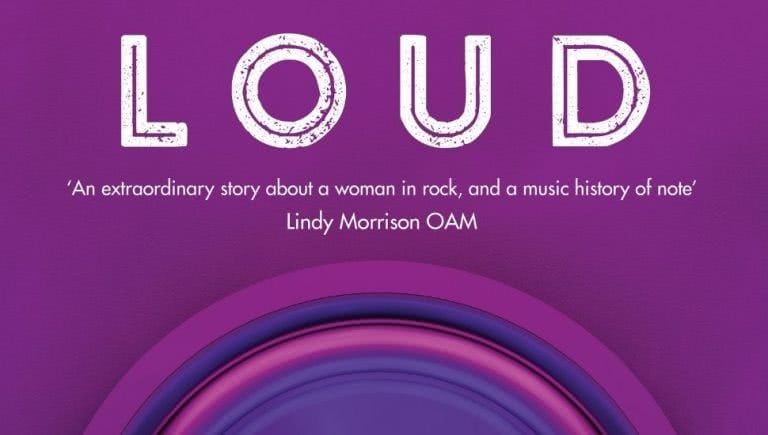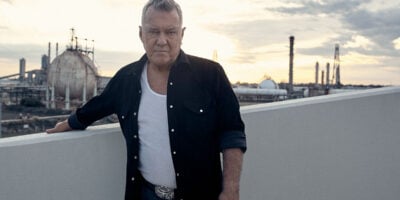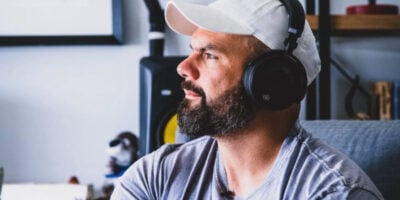Tana Douglas has dedicated her memoir, LOUD: A Life in Rock’n’roll By The World’s First Female Roadie, to “every young girl who has ever dared to dream of more”.
From a fifteen-year-old Brisbane runaway to a self-professed “world’s first female roadie”, Tana Douglas tells the story of resilience and sacrifice in the male-dominated world of concert touring. With tales from the tour buses of AC/DC, Elton John, Iggy Pop, Patti Smith, INXS, and more, Douglas’ story is a rock history time capsule and a journey of self discovery all at once.
To celebrate the LOUD‘s release today, we’ve published an extract from Chapter 19 titled There Goes The Neighbourhood. Check it out below where Douglas writes about the time she pulled rank over Iggy Pop, and how he still owes her a leather jacket.

Extract from Chapter 19 of LOUD
‘There Goes The Neighbourhood’
Lollapalooza Festival was created by Jane’s Addiction front man Perry Farrell and his manager, Australian Ted Gardner in 1991. It was cutting‑edge, with multiple stages and over thirty performances as well an array of vendor booths.
The key difference between Lollapalooza and predecessors such as The US Festival and Glastonbury was that it visited multiple cities on a country-wide tour. This entailed a complicated format production-wise, meaning the crews had to be the best. The likes of Kevin Lyman, who would go on to create the Vans Warped Tour, got their start at Lollapalooza. These crews were young, hardworking and as diversified as the performers.
One of the goals of Lollapalooza was to integrate different elements of social and political opinions and introduce them to the world. We were also about to witness the birth of grunge, which quickly grew from a foetus to a full-grown angsty teenager. Flannel had never looked so good.
Pre-Lolla, grunge bands like Sound Garden, Pearl Jam, Alice in Chains and Mudhoney had all pretty much evolved from the band that started it all, Green River. While Green River never played Lollapalooza, most of the other major grunge groups did. Nirvana was an exception because Kurt Cobain died the year they were to headline – another wasted talent. The industry, sadly, hadn’t got any better at handling these unpredictable musicians.
In general, the mid to late ’90s was a great time for new music; getting discovered had a lot to do with playing Lollapalooza. Bands would start on the side stage and two years later be topping the bill.
There was such a buzz about Lollapalooza that musicians from all walks of life came out to take a look. I even ran into Iggy one year. He was in the backstage area about thirty yards from the stage, trying to get there but surrounded by people vying for his attention. He looked cornered, a little desperate and in need of saving, so after a moment of deliberation I decided to both forgive and rescue him.
I went up to him, pushing my way through the crowd. ‘So! There you are, James. Let’s go, they want you on stage now!’
Iggy looked at me for a moment, either trying to recognise me or thinking I might deck him if I was still pissed off. Then he squinted, smiled and followed me.
Once he was safely on the side of the stage, I turned to look at him. ‘You still owe me a fucking leather jacket!’ I smiled and walked off. (And if you’re reading this, James Osterberg, you still owe me a leather jacket.)
Lollapalooza was all about breaking down boundaries. The likes of Maynard Keenan from Tool getting onstage with Rage Against the Machine, the Dalai Lama playing basketball backstage, or the Jim Rose Circus in catering. What more could you want? It made for great parties on days off.
Lollapalooza was also socially conscious and each year the festival organisers made substantial donations to various charities. With its success, it became a template for festivals around the world, including the Big Day Out in Australia.
After Kurt Cobain’s death, grunge was given the back seat to a heavier sound with an industrial rock edge. The bands included Nine Inch Nails, Tool, Korn, Porno for Pyros, Marilyn Manson, A Perfect Circle and Evanescence, and I quickly took on clients from this market. Fans adapted quickly too, possibly even feeling a little relieved, particularly because the novelty of wearing flannel had worn off.
Another change was the arrival of girls in the industry. In the 1990s women were finally tour managing and running the production and box offices. Pearl Jam, another client of mine, had a female sound engineer, and the band were big supporters of gender equality in the industry. There were girls doing the load-ins and operating follow spots.
Among crews there was a show of acceptance for women, albeit in small numbers. This would make me smile whenever I saw it. These women had no idea I’d been in their situation three decades earlier, just starting out, full of wide-eyed expectations. Hopefully, their road would be easier to traverse, paved with a greater understanding that, yes, a girl can do that!
LOUD by Tana Douglas is available now from ABC Books. Grab your copy from Booktopia.


































